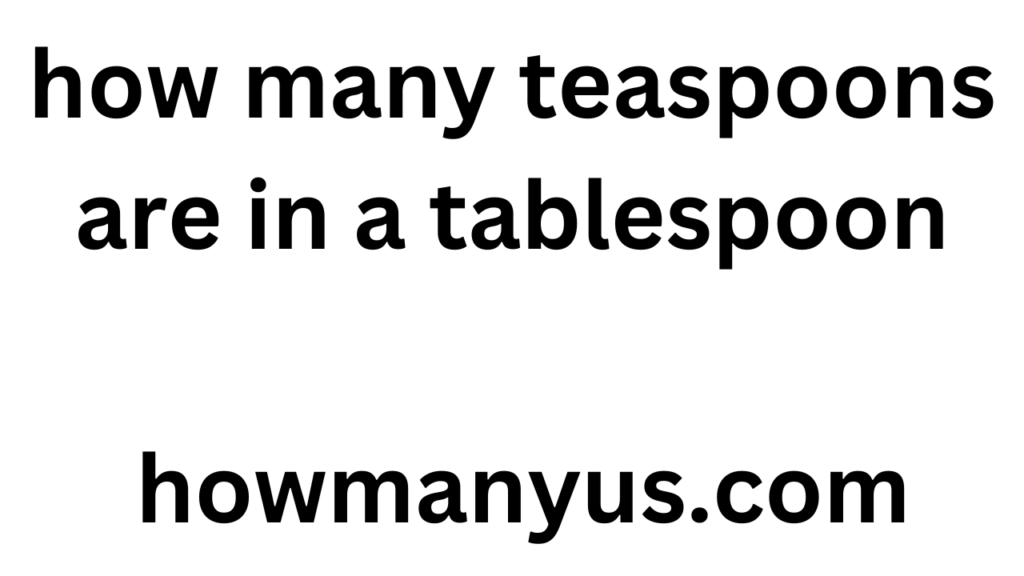how many teaspoons are in a tablespoon

how many teaspoons are in a tablespoon: In cooking and baking, knowing the conversion between teaspoons and tablespoons is essential for accurate measurements. The relationship between these two units is straightforward yet crucial in the kitchen.
how many teaspoons are in a tablespoon: To put it simply, there are three teaspoons in a tablespoon. This conversion is standard in the United States and many other countries. Understanding this conversion allows for precise measurements when following recipes or adjusting ingredient quantities.
how many teaspoons are in a tablespoon: The tablespoon is a larger unit of measurement compared to the teaspoon, making it suitable for measuring larger quantities of ingredients such as liquid or dry goods. On the other hand, the teaspoon is smaller and typically used for smaller amounts of ingredients or when more precision is required.
When recipes call for measurements in tablespoons, it’s essential to convert them accurately to teaspoons if necessary. For example, if a recipe requires two tablespoons of sugar and you only have a teaspoon measuring spoon available, you would need to use six teaspoons of sugar to achieve the equivalent amount.
Likewise, if a recipe calls for teaspoons but you only have a tablespoon measuring spoon, you would need to divide the tablespoon measurement by three to get the equivalent amount in teaspoons. For instance, one tablespoon of vanilla extract would be equivalent to three teaspoons.
how many teaspoons are in a tablespoon: Understanding this conversion also comes in handy when scaling recipes up or down. If you want to double a recipe that calls for two tablespoons of a particular ingredient, you would need to use four tablespoons, which is equivalent to twelve teaspoons.
Conversely, if you need to halve a recipe that calls for six teaspoons of an ingredient, you would use three teaspoons, which is equivalent to one tablespoon.
In summary, knowing that there are three teaspoons in a tablespoon is fundamental for accurate measurement in cooking and baking. This knowledge allows for flexibility in following recipes, adjusting quantities, and ensuring consistent results in the kitchen.

In cooking and baking, knowing the conversion between teaspoons and tablespoons is essential for accurate measurements. The relationship between these two units is straightforward yet crucial in the kitchen.
To put it simply, there are three teaspoons in a tablespoon. This conversion is standard in the United States and many other countries. Understanding this conversion allows for precise measurements when following recipes or adjusting ingredient quantities.
The tablespoon is a larger unit of measurement compared to the teaspoon, making it suitable for measuring larger quantities of ingredients such as liquid or dry goods. On the other hand, the teaspoon is smaller and typically used for smaller amounts of ingredients or when more precision is required.
When recipes call for measurements in tablespoons, it’s essential to convert them accurately to teaspoons if necessary. For example, if a recipe requires two tablespoons of sugar and you only have a teaspoon measuring spoon available, you would need to use six teaspoons of sugar to achieve the equivalent amount.
Likewise, if a recipe calls for teaspoons but you only have a tablespoon measuring spoon, you would need to divide the tablespoon measurement by three to get the equivalent amount in teaspoons. For instance, one tablespoon of vanilla extract would be equivalent to three teaspoons.
Understanding this conversion also comes in handy when scaling recipes up or down. If you want to double a recipe that calls for two tablespoons of a particular ingredient, you would need to use four tablespoons, which is equivalent to twelve teaspoons.
Conversely, if you need to halve a recipe that calls for six teaspoons of an ingredient, you would use three teaspoons, which is equivalent to one tablespoon.
In summary, knowing that there are three teaspoons in a tablespoon is fundamental for accurate measurement in cooking and baking. This knowledge allows for flexibility in following recipes, adjusting quantities, and ensuring consistent results in the kitchen.